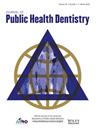Who Could Be Targeted for Teledentistry in Japanese Clinics? A Questionnaire Survey of Patients
Abstract
Objectives
The COVID-19 pandemic has fostered the use of teledentistry worldwide. However, teledentistry remains underutilized in Japan due to a lack of clarity regarding its target population. This study aimed to determine the current demands of patients of dental clinics in Saitama, Japan; enable dental care professionals to adopt teledentistry; and examine which patients could be targeted for teledentistry.
Methods
This cross-sectional study involved a survey of dental patients who visited one of 28 participating dental clinics in September 2020 in Saitama, Japan. The patients were asked about their demographic information, impact of the COVID-19 pandemic, and teledentistry—including future demands (whether they would like to receive teledentistry consultations). Data were analyzed using descriptive statistics and a multiple logistic regression model.
Results
Questionnaires were distributed to 1335 patients, 1312 of whom responded (response rate: 98.3%). The analysis included 835 of the 1227 valid responses to the question about the future demand for teledentistry (“demand” group: 299 patients; “unnecessary” group: 536 patients). The difference in the frequency of dental visits between the “demand” and “unnecessary” groups was significant (p = 0.04). The multiple logistic regression model identified “visited dentists only when necessary” as an independent contributor to the future demand for teledentistry (odds ratio = 1.60, 95% confidence interval = 1.00–2.57).
Conclusions
Teledentistry presents an opportunity for dental care for those who do not habitually visit the dental clinic. Further research should explore the type of dental consultation required by infrequent dental patients and how teledentistry can meet these needs.


 求助内容:
求助内容: 应助结果提醒方式:
应助结果提醒方式:


